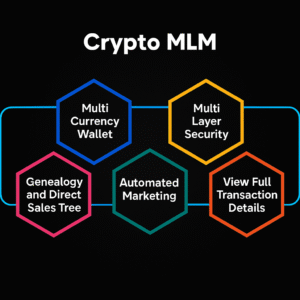
The financial industry has seen more disruption in the last decade than in the previous hundred years, and at the heart of this revolution are cryptocurrency exchanges. They provide the infrastructure that connects traders, investors, businesses, and institutions to digital assets. Understanding why crypto exchanges are emerging as the future of digital trading requires a deeper look into technology, market demand, and evolving economic structures.
The Rise of Digital Trading
Traditional stock exchanges and forex markets have long dominated global finance, but they are often constrained by geographical limitations, regulatory boundaries, and settlement inefficiencies. Cryptocurrency exchanges, by contrast, operate on decentralized technologies that allow for near-instant cross-border transactions and a more inclusive financial system.
Digital trading platforms are not just replacing existing models; they are creating entirely new ones. From tokenized assets to on-chain derivatives, these innovations are redefining how people view liquidity, ownership, and investment.
How Crypto Exchanges Differ From Traditional Markets
Unlike traditional financial markets that rely heavily on intermediaries, crypto exchanges leverage blockchain technology to automate settlement, record transactions, and ensure transparency. This shift reduces counterparty risk, increases efficiency, and allows 24/7 operations without downtime.
At the core, centralized exchanges function similarly to traditional trading platforms, offering order books, liquidity pools, and regulated interfaces. On the other side, decentralized models empower users with direct asset custody, aligning with the ethos of blockchain as a trustless and permissionless system.
Centralization: Bridging Trust and Scalability
Centralized exchanges remain the most widely used platforms because they provide user-friendly interfaces, fast transaction processing, and institutional-grade liquidity. For developers and businesses, centralised exchange development is crucial as it ensures compliance, custodial security, and robust infrastructure. Projects in this domain are building systems capable of processing millions of transactions per second while integrating fiat payment rails to attract mainstream users.
Critics often highlight the risks of custodial failures or hacks, but centralized models continue to dominate because they bridge the gap between traditional finance and emerging blockchain ecosystems.
Decentralization: Redefining Market Participation
At the same time, decentralized exchanges are pushing boundaries by removing intermediaries. With smart contracts enabling peer-to-peer swaps, these systems grant traders complete control of their assets. The evolution of the decentralized crypto trading platform model demonstrates how security, transparency, and autonomy can coexist with liquidity-driven markets.
While challenges such as network congestion and lower throughput persist, the rapid pace of innovation in decentralized finance is steadily addressing these limitations. Layer-2 scaling and cross-chain interoperability are further enhancing the efficiency of DEXs, making them serious contenders for the future.
Peer-to-Peer Systems and Financial Inclusion
One of the most powerful aspects of digital exchanges is their ability to create direct economic participation. A peer-to-peer currency exchange bypasses traditional banking intermediaries and connects users directly across borders. This approach not only reduces costs but also provides financial access to unbanked populations worldwide.
Such systems are particularly impactful in regions with unstable currencies or limited access to traditional banking infrastructure. By combining blockchain verification with real-time trading, peer-to-peer networks are laying the foundation for an inclusive digital economy.
Margin Trading and Advanced Features
As the industry matures, exchanges are incorporating features that were once exclusive to institutional markets. One example is crypto margin trading, which allows traders to borrow funds and amplify their positions. This functionality introduces new profit opportunities but also higher risks, requiring advanced risk management mechanisms.
Margin-enabled platforms attract both retail and professional traders who seek more flexibility and higher leverage in volatile markets. The growth of derivatives and margin markets demonstrates how crypto exchanges are becoming full-fledged financial ecosystems rather than just asset swap platforms.
Why Exchanges Drive the Future of Finance
There are several reasons why crypto exchanges are positioned as the backbone of future financial systems:
-
Global Accessibility
Unlike traditional stock exchanges limited by geography, crypto platforms are open to anyone with internet access.
-
24/7 Operations
Markets never close, enabling continuous trading across time zones.
-
Tokenization of Assets
From real estate to carbon credits, exchanges enable the fractionalization and trading of non-traditional assets.
-
Interoperability
Cross-chain protocols make it possible for assets from different blockchains to trade seamlessly.
-
Institutional Entry
Exchanges are integrating custody, compliance, and settlement systems to attract banks, hedge funds, and corporate investors.
This convergence of accessibility, innovation, and institutional adoption solidifies their role in shaping financial markets of the future.
Balancing Regulation and Innovation
One of the biggest challenges facing the sector is regulation. Centralized exchanges must comply with KYC and AML requirements, while decentralized systems often exist in a gray area. As regulators worldwide define clearer policies, exchanges must adapt to balance compliance with user autonomy.
Forward-looking platforms are designing hybrid models that merge the best of both worlds: the liquidity and compliance of centralized systems with the autonomy and transparency of decentralized structures.
The Educational Imperative
For digital trading to truly become mainstream, user education is critical. While early adopters understand private key management, liquidity pools, and DeFi protocols, new entrants often find the learning curve steep. Exchanges play an essential role in educating users about risk management, security practices, and the implications of advanced trading tools.
By simplifying user interfaces and providing educational resources, exchanges can drive adoption while safeguarding users from unnecessary risks.
Join the Next Wave of Digital Finance
Crypto exchanges are not just tools for trading digital assets—they are foundational pillars of a new financial era. By combining scalability, security, innovation, and global accessibility, they are poised to become the future of digital trading.
As markets evolve, we will continue to see improvements in centralised exchange development, innovations within the decentralized crypto trading platform space, the expansion of peer to peer currency exchange models, and broader adoption of crypto margin trading. Together, these advancements highlight why exchanges are more than just marketplaces—they are the engines driving digital finance forward.







